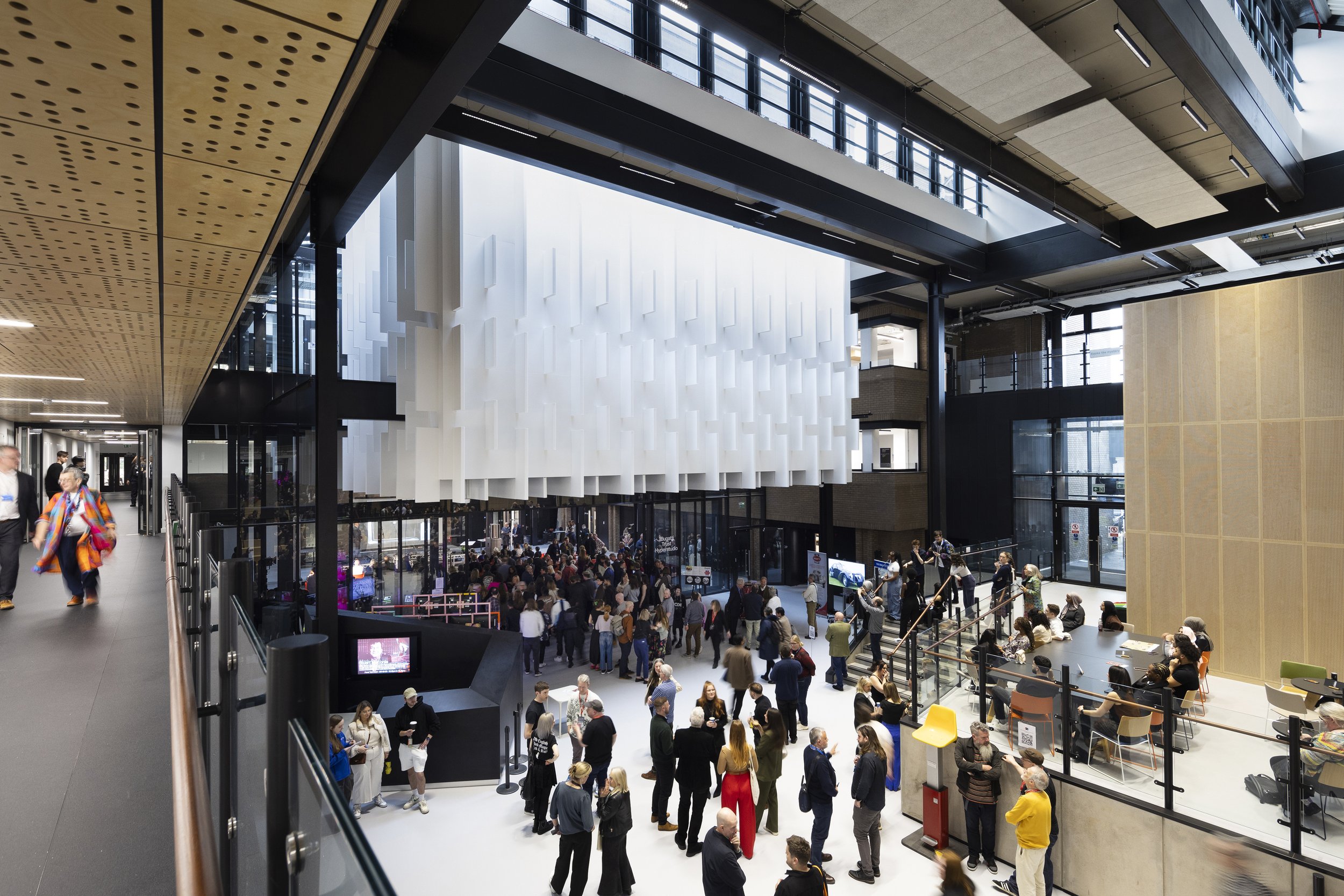A New Heart in Coventry
11th June saw 30 people visit Coventry University’s College of Arts and Society for a tour co-ordinated by Don’t Waste Buildings to showcase this powerful example of how smart, sustainable reuse can unlock societal, environmental and cultural value for a local place.
What were once two separate 1960s, unforgiving and indistinct academic buildings have been combined into a striking single block with a central, vital heart space, adapted and converted to provide an uber-flexible immersive arts and civic space that provides new connectivity and welcomes the city into the campus.
Photo: Nick Caville
Following a superb intro from Shaun Hides of Coventry University and Svetlana Solomonova from design architects BDP, we went on a tour of the building along with Rachel Darby and Madeleine Knight of client architect D5 (Maddie has now switched to Gensler).
It was easy to see why this project has been so transformational for the University, expanding their capabilities, attracting more students and enabling more public and city events as a civic amenity. And it’s easy to see why it won the RIBA West Midlands 2025 Awards Building of the Year.
As Higher Education facilitators face increasing pressure to provide better value for money and estates teams are under increasing financial pressure, there is a lot to learn from Coventry University’s approach. Importantly they did their due diligence to understand what they had and what they needed from the outset. And it turned out to create new, would cost them significantly more. Yes, there were still surprises (hello asbestos), but they still saved money.
Key takeaways included:
New build on the same footprint was more expensive; we have a perception that reuse will cost more. That’s not always the case.
Compromises were made, as with any build, but the results deliver an honest, super flexible, compliant building–exceptionally designed. Alison Franzoni, Operations Director for the College of Arts and Society said: “This building has given the tools and facilities to match the ambitions of our arts students and in turn raised the ambitions of our humanities students.”
9,534,720 kg CO2 has been saved–that’s over 14000 flights. We will never stop being shocked by how much carbon is wasted in demolition and construction.
The heritage, history and legacy of the space have been really important for the students (particularly the arts students) and the city.
We deliberately asked the question: “What policies and financial constraints need to change to make reuse easier and financially viable?” Svetlana gave this superb answer (printed here with permission):
“For me, it’s threefold: Legislation, Financial and Behavioural. Financial in that the VAT rules need to either match new build or incentivise reuse, or go further in penalising demolition and incentivise reuse with a green tax. Legislation in that carbon assessments could and should be mandatory, local policy could mandate reuse unless strong reasons why not, and the planning legislation around change of use could be relaxed to make it easier – as it is with commercial to resi. And then Behavioural. There is an assumption that reuse will be the harder, more complex route, and that new equals best. We need to change that attitude.”
We couldn’t agree more!
Photos from the tour (courtesy Sarah Worth) and photographer Nick Caville below.





